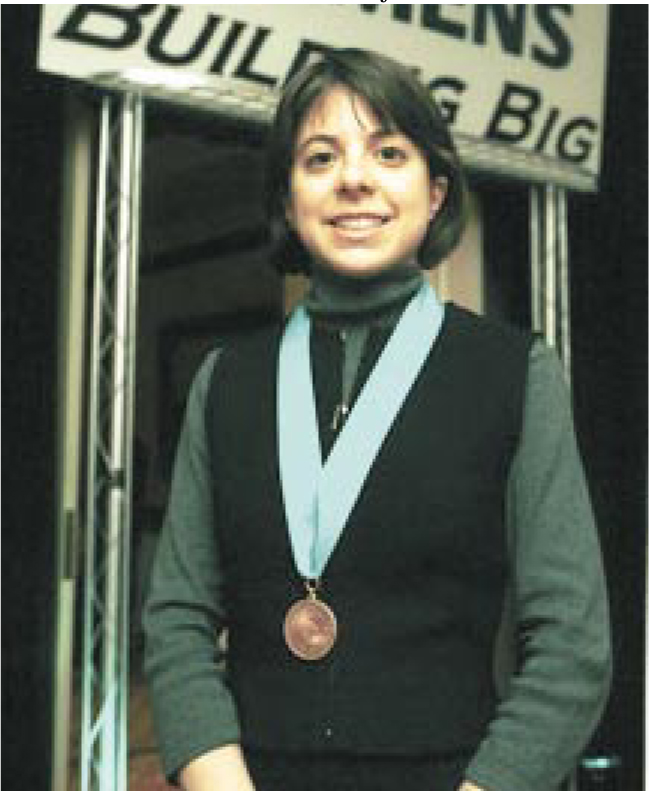High-School Physics Student Bags Two Competitions
DOI: 10.1063/1.1381099
Mariangela Lisanti, a 17-year-old high-school student from Westport, Connecticut, won first prize in a science competition last December for her project “Conductance Quantization in Gold Nanocontacts,” taking home a $100 000 college scholarship. Then, in March, she did it again.
Lisanti received first prize both in the Siemens Westinghouse Science and Technology Competition and in the Intel Science Talent Search—garnering a total of $200 000 in prize money—for a device that measures voltage across nanowires. Her device, which may be useful in the development of miniature electronics, is made largely from parts available at the local electronics store. It cost only $35, much less than similar existing commercial products.
Intel has sponsored the 60-year-old science talent search since 1998, when it took over from Westinghouse, the original sponsor of the competition. That same year, Siemens, which bought the Westinghouse power generation business, decided to start a competition of its own. Both contests invite independent original research from US high-school students. But unlike the Intel competition, which is open to all fields, the Siemens competition focuses on the hard sciences, includes team entries, and judges students solely on their projects rather than their overall academic potential.
The prize money has risen substantially in the past couple of years—combined, the two competitions now give out more than $1.5 million annually. Top scholarships awarded in the Intel competition have more than quadrupled in value over the past 10 years. In an effort to increase participation—about 2000 students took part in the two competitions—Intel now gives each of its 300 semifinalists and their schools prizes worth $1000. And the 40 finalists in the Intel competition each receive a laptop computer.

Lisanti struck it rich with her project measuring the conductance of gold nanowires.
JOHN HARRINGTON

